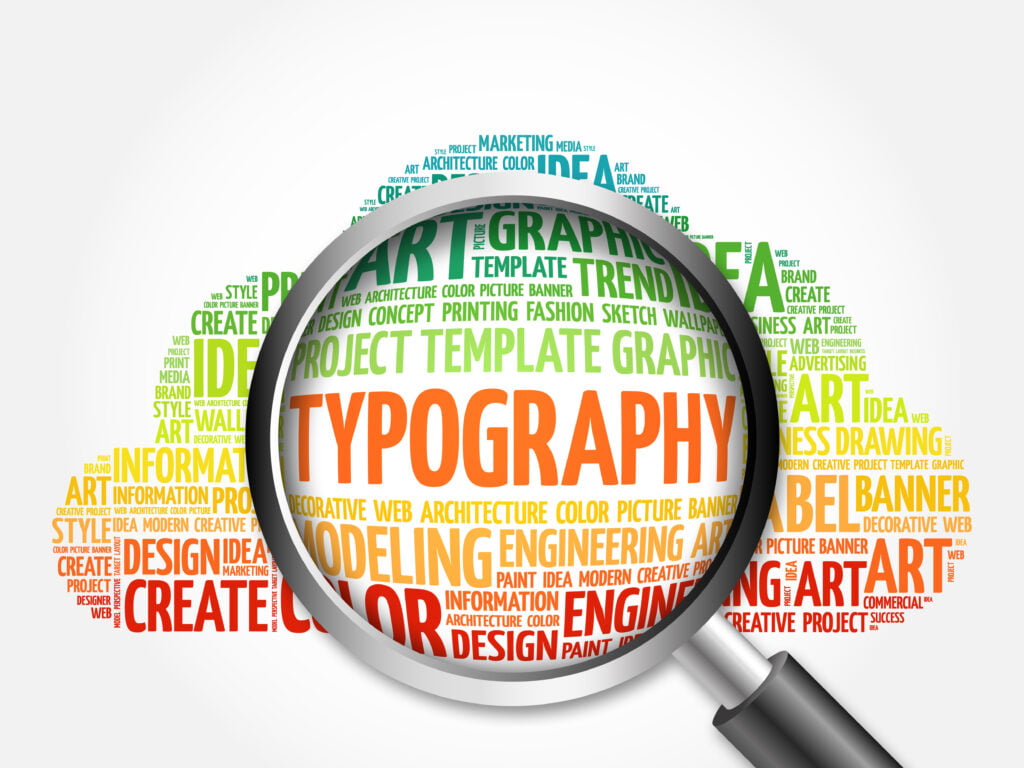Typography is a crucial element in web design that often goes unnoticed but has a significant impact on user experience. It encompasses more than just selecting fonts; it involves crafting a visual language that guides users, enhances readability, and supports brand identity. As digital communication continues to evolve, mastering effective typography becomes increasingly important for creating engaging digital experiences.
Good typography not only makes text visually appealing but also ensures that it is easy to read and interact with. It influences how users perceive and engage with content, impacting their overall experience on a website or app. With the growing use of mobile devices and varying screen sizes, typography must adapt to these changes, making it essential for designers to choose typefaces that perform well across all platforms.
Typography is foundational in shaping effective digital experiences. It includes several key elements that directly affect how users interact with content. Proper typography enhances readability, supports intuitive navigation, and reinforces brand identity, making it a crucial aspect of graphic design and digital communication.
The Basics of Typography
Typography is the art of arranging text to make it readable, engaging, and functional. It involves several components:
Typeface Selection
Selecting the right typeface is vital. A typeface is a design of a collection of characters, including letters, numbers, and symbols, such as Arial, Times New Roman, and Helvetica. Each typeface conveys a different tone or personality, which can impact how users perceive the content. In branding, the choice of typeface can significantly affect the overall impression of a brand.
Font Variations
Fonts are specific styles of a typeface, including options like bold, italic, or regular. They are used to emphasize and differentiate text elements. For example, a bold font might be used for headings, while regular fonts serve as body text. Consistent use of font variations helps maintain a cohesive design and aligns with the principles of effective copywriting.
Text Size and Spacing
Proper text size and spacing are crucial for readability. Text that is too small can be hard to read, while excessive space can make content seem disjointed. Line spacing, or leading, affects how lines of text fit together, which impacts overall readability. This principle is essential in graphic design, where balance and alignment enhance the visual flow of content.
Key Typography Elements

Hierarchy
Hierarchy organizes content to direct users’ attention effectively. By using varying font sizes and weights, designers can create a visual structure that highlights key information. For example, larger fonts for headings and smaller fonts for subheadings help users quickly identify important sections. Effective hierarchy supports navigation and user interaction, crucial for web design.
Alignment
Text alignment determines how text is positioned relative to margins or grid lines. Options include left, right, center, and justified. Each alignment choice affects text perception and readability. Consistent alignment contributes to a clean, organized layout, enhancing the user experience on websites and in social media marketing materials.
White Space
White space, or negative space, refers to the empty areas around text and other elements. It helps create balance and focus by preventing overcrowding. Effective use of white space makes content easier to read and navigate, improving overall user engagement. This principle is key in both graphic design and web design, where clarity and simplicity enhance the visual appeal.
The Role of Typography in User Experience
Typography is not just about making text look good; it plays a crucial role in user experience. Here’s how effective typography enhances various aspects of a website or app:
Readability
Readable text ensures that users can easily consume content. Good typography practices, such as choosing appropriate font sizes and maintaining sufficient contrast between text and background, help users read and understand information without strain. This is crucial for websites and digital platforms where clear communication is key.
Navigation
Typography aids in navigation by establishing a clear visual hierarchy. This involves using font sizes, weights, and styles to differentiate between elements like headings, subheadings, and body text. Effective typography guides users through content, making it easier to find relevant information. This is particularly important in web design and content management.
Brand Identity
Typography plays a significant role in shaping brand identity by reflecting a brand’s personality and values. Consistent use of specific typefaces and styles helps establish a recognizable and cohesive brand image. For instance, a modern typeface might convey innovation, while a traditional serif font could suggest reliability and trustworthiness.
Engagement
Engaging typography encourages users to interact with content. Well-designed text can make content more appealing, prompting users to spend more time exploring and interacting with it. This can lead to higher engagement rates and better user retention, benefiting digital marketing strategies and social media campaigns.
Common Typography Mistakes
Avoiding common typography mistakes is essential for maintaining a high-quality design. Here are some pitfalls to watch out for:
Inconsistent Font Use
Using too many different fonts or styles can result in a cluttered and disorganized look. Stick to a few fonts and maintain consistency throughout the design to ensure a cohesive appearance. This principle is vital for effective branding and web design.
Poor Readability
Text that is difficult to read due to small size, low contrast, or improper spacing can frustrate users. Ensure that text is clear and legible by using appropriate font sizes, line spacing, and contrast. This is essential for improving user experience and accessibility.
Lack of Hierarchy
Failing to establish a clear hierarchy can make it challenging for users to navigate and understand content. Use varying font sizes and styles to highlight important information and guide users through the content. Effective hierarchy supports intuitive navigation, crucial for web design and digital content.
Ignoring Accessibility
Neglecting accessibility considerations can exclude users with visual impairments. Ensure that text is readable for everyone by choosing high-contrast color combinations and providing alternative text for images. This is important for creating inclusive digital experiences and supporting diverse user needs.
Typography is a vital aspect of web design that influences how users interact with and perceive digital content. Effective typography enhances readability, supports navigation, and strengthens brand identity. By focusing on key elements such as typeface selection, font variations, hierarchy, alignment, and white space, designers can create more engaging and user-friendly experiences.
As digital platforms continue to evolve, understanding and applying typography principles will remain essential for delivering effective and accessible content. Good typography not only improves the visual appeal of a website or app but also contributes to a positive user experience, helping users find and interact with information more easily. Embracing these principles ensures that typography remains a powerful tool in crafting successful digital designs.
